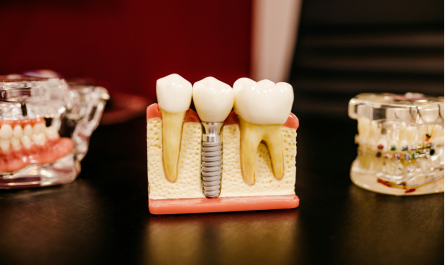Contents
- 1 Key Takeaways
- 2 Introduction to Dental PPO Plans
- 3 The Structure of Dental PPO Plans
- 4 Benefits of Choosing a Dental PPO Plan
- 5 Differences Between Dental PPO and HMO Plans
- 6 Factors to Consider When Selecting a Dental PPO
- 7 Strategies for Maximizing Your Dental PPO Benefits
- 8 Exploring the Costs Associated With Dental PPO Plans
- 9 Common Misconceptions About Dental PPOs
- 10 The Importance of Regular Dental Visits With a Dental PPO
- 11 Transitioning to a Dental PPO Plan: What to Expect
- 12 Dental PPOs and Oral Health Outcomes
Key Takeaways
- Dental PPO plans offer versatility with a personalized approach to dental care.
- Understanding premiums, deductibles, and co-payments is critical to demystifying dental PPO costs.
- Proactive dental care through regular visits is essential for maintaining optimal oral health.
Introduction to Dental PPO Plans

Choosing the right dental insurance plan is crucial for overall health. PPO dental plans are a popular option due to their cost and flexibility. Users of PPO plans typically enjoy the freedom to choose their dental providers and benefit from negotiated rates, equating to potential savings on dental treatments. Even though each dental PPO plan has its features and benefits, they all share certain commonalities in their structure and operation that benefit potential members to understand.
The Structure of Dental PPO Plans
A PPO dental plans is a type of dental insurance with a network of dentists and specialists. These professionals have agreed to provide dental services to the plan members at negotiated rates, usually lower than their standard charges. This system helps insured individuals manage their dental care costs and benefits the participating dentists via streamlined administrative processes and a steady influx of patients. Significantly, while users are encouraged to choose from within the network for the most significant cost savings, they are not restricted from seeing out-of-network providers, offering flexibility that many find attractive.
Benefits of Choosing a Dental PPO Plan
The principal draw of Dental PPO plans is the autonomy they offer subscribers in choosing dental care providers. Whether it’s a preference based on location, personal rapport, or specialist services, the ability to select from a broad network of dental professionals is highly valued. Financially, members face out-of-pocket expenses in the form of co-payments or co-insurance, where the insured individual pays a portion of the service cost, and the insurance covers the remainder up to the allowed amount. This financial participation helps manage insurance costs while incentivizing members to seek necessary dental care.
Differences Between Dental PPO and HMO Plans
Dental PPOs are often juxtaposed with Dental Health Maintenance Organizations (HMOs), which traditionally have a more limited network and require members to choose a primary care dentist (PCD) for all their dental needs. PPOs, conversely, offer broader provider options and eliminate the need for a PCD, which for many translates to higher convenience and access to care. However, the greater freedom comes at a cost—PPO plans may have higher premium rates than HMOs. The increased cost is a trade-off for the flexibility and potentially more extensive coverage.
Factors to Consider When Selecting a Dental PPO
When selecting a dental PPO, three critical factors emerge as most important: the depth of coverage, the financial investment, and the network’s reach. Each plan varies in these areas, meaning shoppers should carefully review what procedures are covered and to what extent. For example, some plans may offer excellent preventive care but limited orthodontic coverage. Financially speaking, understanding the plan’s premium, deductible, and maximum out-of-pocket expenses is fundamental to evaluating its affordability. Lastly, the provider network size can significantly affect convenience, a more extensive network means more choices and generally easier access to care. Considering these elements, prospective policyholders can better gauge which plan will align with their dental care priorities. Delving into expert commentary, such as this advice from Consumer Reports, can equip individuals with more significant insights into the selection process.
Strategies for Maximizing Your Dental PPO Benefits
An effective way to maximize the value of a Dental PPO plan is by remaining within the network for all dental services. Doing so minimizes personal expenditures and reduces the hassle associated with claims and reimbursements. Equally important is a thorough understanding of the plan’s coverage limitations and the procedure for benefits claims. Such familiarity can prevent unexpected expenses and ensure that benefits are fully utilized. For example, taking advantage of covered preventive services like cleanings and routine exams helps maintain dental health and can prevent the need for more complex and expensive procedures.
Exploring the Costs Associated With Dental PPO Plans
The costs associated with Dental PPOs can be divided into three primary categories: premiums, deductibles, and co-payments or co-insurance. Premiums are the fixed, periodic amounts paid for the insurance policy and are often a significant consideration when choosing a plan. Deductibles are the amounts an insurance policyholder must pay before the insurance company begins coverage. Following the deductible, co-payments or co-insurance represent the portion of service costs that the member is responsible for. These factors combined indicate the total cost of the Dental PPO plan for the user and should be evaluated in light of personal finances and anticipated dental care needs.
Common Misconceptions About Dental PPOs
A common misapprehension about Dental PPO plans is the belief that all dental services are uniformly covered across the board. In reality, coverage levels can vary for treatments or procedures, affecting the decision-making process for those considering a plan. For instance, preventive services like routine cleanings might be fully covered, whereas more extensive procedures such as crowns or bridges are only covered at a percentage. Clearing up such misunderstandings is essential for members to have realistic expectations and to make the most of their dental PPO benefits.
The Importance of Regular Dental Visits With a Dental PPO
Access to a Dental PPO plan encourages individuals to be proactive with oral health by scheduling regular dental visits. Consistent care is vital for cleaning, preventing decay, and catching potential issues early on. Detecting and treating dental problems early can reduce the need for invasive treatments and prevent severe conditions. Dental PPO plans significantly promote oral health, essential to overall well-being.
Transitioning to a Dental PPO Plan: What to Expect
Transitioning to a new dental plan can be seamless, provided one has the correct information. Understanding your new dental PPO’s specific benefits, limitations, and procedures is critical to making the most out of the plan. It’s beneficial to familiarize oneself with any the plan and how to proceed should emergency dental services be required. Additionally, taking the time to understand how to submit claims and any associated deadlines can save time and avoid unnecessary complications in the future.
Dental PPOs and Oral Health Outcomes
The availability of dental insurance is positively correlated with seeking preventative care and treatment for dental problems. According to research highlighted by Healthline, the regularity of dental check-ups afforded by insurance coverage plays a significant role in maintaining oral health. The preventive measures covered by most Dental PPO plans directly correlate with increased dental visits, contributing to positive health outcomes for the policyholders.




